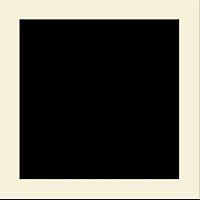Postscript: Difference between revisions
imported>Dmitrii Kouznetsov |
imported>Dmitrii Kouznetsov |
||
| Line 3: | Line 3: | ||
==Vector representation of figures== | ==Vector representation of figures== | ||
[[Image:BlackSquareReproduction.jpg|200px|thumb|The EPS-reproduction of the [[Black Square]] by [[Kazimir Malevich|K.Malevich]] ]] | |||
Typically, the postscript uses the analytical description of figiure with simple objects | Typically, the postscript uses the analytical description of figiure with simple objects | ||
(straight lines, circles and arcs of circles and ellipses, ploigons); similar representation is used also for letters. This allows the compact description of data and the strong (sometimes, orders of magintude) | (straight lines, circles and arcs of circles and ellipses, ploigons); similar representation is used also for letters. This allows the compact description of data and the strong (sometimes, orders of magintude) | ||
zooming-in, keeping the [[camera-ready]] quality of the figure. | zooming-in, keeping the [[camera-ready]] quality of the figure. | ||
Some images allow efficient representation through the EPS format. For example, the code below reproduces the famous painting | |||
[[Black Square]] by [[Kazimir Malevich]] (originally implemented with oil on canvas): | |||
%!PS-Adobe-2.0 EPSF-2.0 | |||
%%BoundingBox: 0 0 100 100 | |||
/M {moveto} bind def | |||
/L {lineto} bind def | |||
/C {closepath} bind def | |||
/F {fill} bind def | |||
/RGB {setrgbcolor} bind def | |||
.96 .94 .85 RGB 0 0 M 100 0 L 100 100 L 0 100 L C F | |||
0 0 0 RGB 10 10 M 90 10 L 90 90 L 10 90 L C F | |||
showpage | |||
%%Trailer | |||
==Roster representation of data== | ==Roster representation of data== | ||
Revision as of 18:01, 30 January 2009
PostScript (PS) is a programming language designed for description of two-dimentional objects desigend for visual observation by humans, characterized in that, that, in order to avoid the use of the group operation (parenthesis), the command (operator), in general, appears after the operands. PostScript is standard format for presentation of illustrations at the electronic submission of figures for the publication is the scientific journals.
Vector representation of figures
Typically, the postscript uses the analytical description of figiure with simple objects (straight lines, circles and arcs of circles and ellipses, ploigons); similar representation is used also for letters. This allows the compact description of data and the strong (sometimes, orders of magintude) zooming-in, keeping the camera-ready quality of the figure. Some images allow efficient representation through the EPS format. For example, the code below reproduces the famous painting Black Square by Kazimir Malevich (originally implemented with oil on canvas):
%!PS-Adobe-2.0 EPSF-2.0
%%BoundingBox: 0 0 100 100
/M {moveto} bind def
/L {lineto} bind def
/C {closepath} bind def
/F {fill} bind def
/RGB {setrgbcolor} bind def
.96 .94 .85 RGB 0 0 M 100 0 L 100 100 L 0 100 L C F
0 0 0 RGB 10 10 M 90 10 L 90 90 L 10 90 L C F
showpage
%%Trailer
Roster representation of data
The bitmap representation of data is also supported, although for the roster representation, the advantages of the postscript are not so obvious. The sintax of postscript allows to generate the simple images with few lines, for example, the code
!PS-Adobe-2.0 EPSF-2.0
%%BoundingBox: 0 0 62 122
100 100 scale
.1 .1 translate 4 4 1 [8 0 0 8 0 0] {<5a6a>} image
.0 .6 translate 4 4 1 [8 0 0 8 0 0] {<5a5a>} image
showpage
%Trailer
generates the figure shown at right. In the code above, the line with sequence "5a5a" produces the two vertical sticks at the top of the image.
The more complicated example with description can be found at [1].
Use of postscript
Several manuals on the postscript are available online; they allows to use the postsctipt without any preliminary learning. [2]
External sources
http://en.wikipedia.org/wiki/PostScript
References
- ↑ Exampel of the roster image of smile made in postscript, http://www.tailrecursive.org/postscript/image.html
- ↑ http://www.tailrecursive.org/postscript/postscript.html

